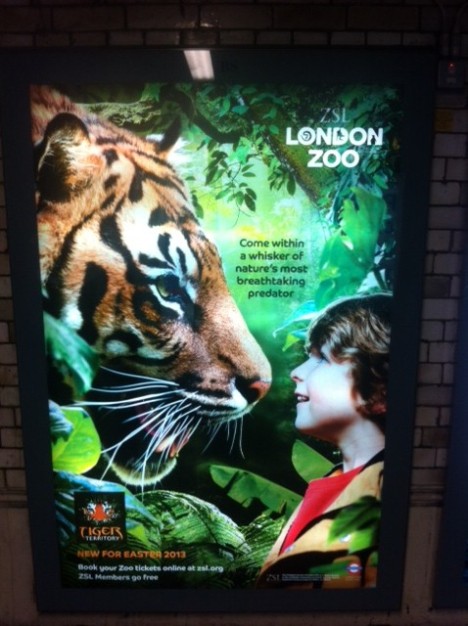With fewer than 4,000 tigers left in the wild there is a high probability that they will be extinct within the next 20 years. Already two of the nine subspecies have gone that way.
One subspecies under particular threat is the Sumatran tiger, Panthera tigris sumatrae. With only 300 left in the wild and a similar number in captivity their case is critical. This is where the Zoological Society of London (ZSL) comes in.
I attended an opening event for the new flagship exhibit at ZSL London Zoo, Tiger Territory. Given the fact that Britain was in the middle of a deep freeze the event would have better suited their larger Siberian cousins. The tigers appeared to take the elements in their stride, probably due to hot rocks, indoor dens and a heated plunge pool.
Roaming the 2,500 square metre enclosure are a breeding pair or at least that’s what the officials hope with introductions going well. With so few Sumatrans in the captive breeding programme the matching of the pair has been carefully planned with the two coming together from zoos in Australia and America.
The male is an impressive 130kg and the female a cute 85kg, but she’s still a natural born killer and on sight of her razor sharp claws and enormous canines you’re left in no doubt.

Whilst this Indonesian inspired exhibit is not the final piece in the Regent’s Park master plan it’s a key element in transforming the historic site into a truly world class zoo.
I was lucky to spend four years at ZSL from 2004 and since then I’ve seen the Zoo evolve with the opening of attractions such as Komodo Dragons, Meet the monkeys, Gorilla Kingdom, Animal Adventure and Penguin Beach.
Tiger Territory plays an important role in maintaining a diverse and vibrant gene pool, raising funds and inspiring the next generation to protect the natural environment. But it’s ZSL’s in-situ conservation programmes that will ensure that the Sumatran tiger doesn’t become the next victim of the current mass extinction.
The Society’s conservation team are working in the field with local employees to ensure that the delicate balance is struck between the needs of wildlife and the needs of man. With only 7% of tiger habitat remaining protection of the wild Tiger Territory is paramount.


 Previous Post
Previous Post
